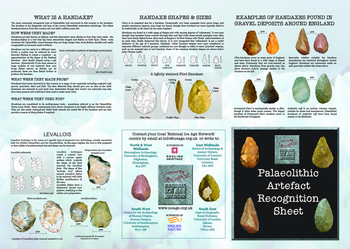National Ice Age Network
Royal Holloway, University of London, University of Leicester, University of Birmingham, 2010. (updated 2011) https://doi.org/10.5284/1000388. How to cite using this DOI
Data copyright © Royal Holloway, University of London, University of Leicester, University of Birmingham unless otherwise stated
This work is licensed under the ADS Terms of Use and Access.
Primary contact
Dr
Danielle
Schreve
Department of Geography
Royal Holloway, University of London
Egham
Surrey
TW20 0EX
England
Tel: 01784 443569
Resource identifiers
- ADS Collection: 986
- ALSF Project Number: 3790
- ALSF Project Number: 3952
- DOI:https://doi.org/10.5284/1000388
- How to cite using this DOI
Introduction

The National Ice Age Network expanded and built upon the success of The Shotton Project, a Midlands Ice Age network, funded by the ALSF in 2003/2004. It focuses on the Pleistocene (Ice Age) remains to be found in England's sand and gravel quarries. These remains include sediments and their contained flora and fauna relating to the past environments of the Ice Age, together with the archaeological evidence for some of the country's earliest human inhabitants. Although a resource of great importance for science and education, and of widespread public interest (e.g. mammoths, Neanderthals, climate change), these remains have often not received the attention devoted to the environmental and archaeological evidence for later periods.
Sand and gravel quarrying has benefited geology, palaeontonlogy and archaeology enormously. It is because of deep excavation for the purposes of commercial quarrying that the geological sequences, the fossil remains of plants and animals, and the stone tools of our earliest ancestors - the raw materials needed to reconstruct the Ice Age world - have come to light. However, quarrying is also a destructive process - much is lost without record - and the benefits of aggregates quarrying to understanding and reconstructing the Ice Age world cannot be realised unless the fossils and archaeological remains are recorded and recovered. To tackle this problem was the primary aim of the National Ice Age Network.









